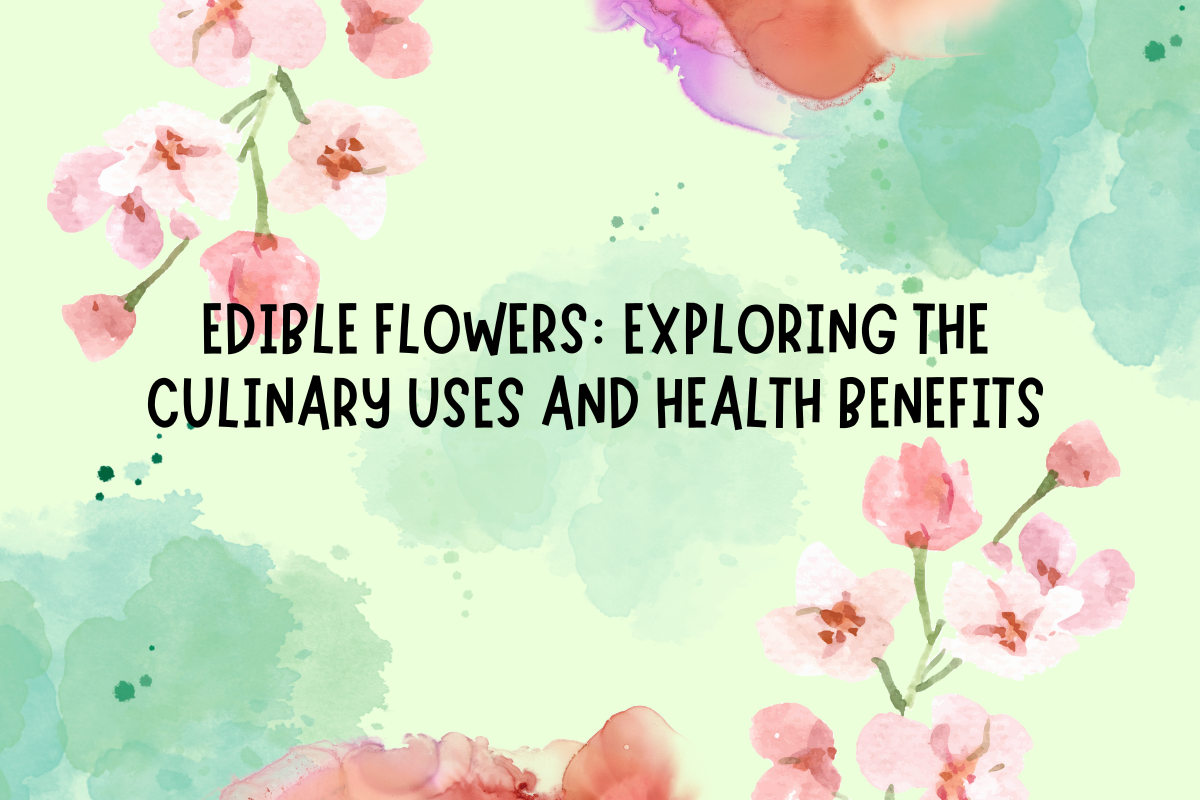Edible Flowers: Exploring the Culinary Uses and Health Benefits
By~ Scholar Planet
Created At: 08 Jul, 2023

Edible flowers have been embraced
by various cultures throughout history, adding beauty, flavour, and health
benefits to our meals. These delicate blossoms not only enhance the visual
appeal of dishes but also contribute subtle flavours that elevate them from
ordinary to extraordinary. From salads and garnishes to infusions and desserts,
edible flowers offer a range of culinary uses. Moreover, they provide essential
nutrients, antioxidants, and even aromatherapy benefits, promoting overall
well-being.
Culinary Uses:
Edible flowers have been used in
cooking for centuries, adding elegance and novelty to dishes. Popular choices
include nasturtiums, pansies, marigolds, violets, roses, and lavender.
1. Salads and Garnishes:
Edible flowers are commonly used in salads and as garnishes due to their
vibrant colours and delicate flavours. Nasturtiums add a peppery taste, while
pansies and violets offer mild sweetness, making them eye-catching additions to
any salad or dessert.
2. Infusions and Beverages:
Many edible flowers are used to infuse drinks and create refreshing beverages.
Lavender, for instance, lends a soothing aroma and subtle floral taste to
herbal teas, lemonades, and cocktails. Rose petals are another popular choice
for infusions, adding a delicate and fragrant essence to syrups, tonics, and
ice creams.
3. Culinary Applications:
Edible flowers can be incorporated into a variety of culinary creations. They
serve as unique ingredients in baked goods like cakes, cookies, and scones,
providing elegance and flavour. Floral extracts and essences are also used in
confectionery and desserts, adding a touch of floral sophistication to
chocolates, truffles, and creams.
Health Benefits:
Edible flowers offer more than
just visual and culinary appeal—they also provide a host of health benefits.
1. Nutritional Value:
Edible flowers contain essential nutrients such as vitamins A, C, and E, which
are potent antioxidants that combat oxidative stress. They also provide
minerals like calcium, potassium, and magnesium, crucial for maintaining
optimal health.
2. Antioxidant Properties:
The vibrant colours of edible flowers often indicate their antioxidant content.
Antioxidants protect the body against harmful free radicals, reducing the risk
of chronic diseases like heart disease and cancer. Including edible flowers in
your diet boosts antioxidant intake and promotes overall well-being.
3. Aromatherapy and
Relaxation: Flowers like lavender and chamomile are known for their calming
properties. Their aromatic compounds soothe the mind and body, aiding in
relaxation and better sleep. Enjoying a cup of lavender tea or indulging in a
lavender-infused dessert can help alleviate stress and promote tranquillity.
4. Digestive Aid: Some
edible flowers, such as chamomile and calendula, support digestive health. With
anti-inflammatory properties, they soothe gastrointestinal discomfort,
alleviate indigestion, and promote a healthy gut.
A Word of Caution:
While exploring edible flowers
can be exciting, caution must be exercised. One should take flowers from
reliable sources and only those which are organic and pesticide free. People
with allergies or sensitivities should be cautious when trying them.
Hence, by responsibly exploring the world of
edible flowers, you can elevate your dining experience and enjoy the unique
delights
